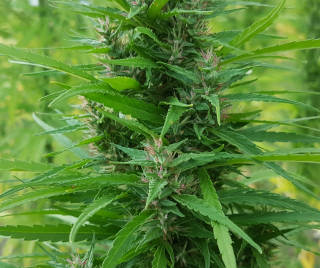
Hemp is a genus of plants native to Central Asia; Known since ancient times, today it is cultivated all over the world and is also commonly known as cannabis. Within the single genus, several species have been identified and cataloged over the centuries: the most common are indica and sativa, which are flanked, depending on the type of classification adopted, by other varieties such as "ruderalis", "spontaneous" or "kafiristanica". The controversial taxonomy of hemp still generates some confusion, especially by the less experienced; However, there are specific differences between Cannabis sativa and indica: below, let's see what they are.
Indica sativa: differences
To understand what are the differences between cannabis indica and sativa it is necessary to try to reconstruct first the taxonomic history of hemp, ie how the plant has been classified over the last three centuries. The cannabis gene was first catalogued in 1753 by Carl Nilsson Linnaeus, a Swedish botanist also known by the Italianized name Carl Linnaeus. He believed that the genus of hemp was composed of only one species; as a result, the nomenclature still more common today, Cannabis sativa Linneus (the same used, for example, in Law no. 242 of 2016) spread. In 1785, the French botanist Jean-Baptiste Lamarck identified a second species of cannabis, which was classified as Cannabis indica Lam, as it was mainly cultivated in India. Lamarck described indica as a poorer fiber than hemp already known and cultivated in Europe; At the same time, he noted that the former had greater intoxicating power. In the twenties of the last century, the Russian botanist Janichevsky classified a third species, as it is sufficiently different from both sativa and indica: Cannabis ruderalis, widespread mainly in the regions of central Russia.
During the twentieth century, new classifications emerged. In 1976, Ernest Small and Arthur Cronquist revised the pre-existing taxonomy by identifying a single genus of hemp, to which two subspecies belong: Cannabis sativa L. and Cannabis indica (Lam.) Small & Cronq. (basically, an 'indica sativa'). Finally, it is due to Richard Evans Schultes, Harvard botanist, the division of cannabis into three distinct species: Indica, Sativa and Ruderalis. In summary, from the 18th century onwards, different 'varieties' of hemp have been catalogued, but some scholars consider them different species while others identify them as subspecies of a single genus of plants.
Schultes' is still the most referenced subdivision, as it fairly faithfully reflects the different characteristics of the various cannabis species: Sativa is 'common' hemp, Indica is Indian hemp while Ruderalis prefers cold climates and can have a weed character in the absence of competing species.
Characteristics marijuana indica
The cannabis from which the so-called "indica herb" is obtained is native to the Indian subcontinent and is still cultivated especially in Afghanistan, Pakistan, Tibet, Nepal and northern India . Indica plants have a vaguely bushy appearance due to the proximity between the foliage nodes, which involves the development of a dense and compact canopy. Despite having a rather rapid growth rate, they do not reach the height of Sativa plants; on the other hand, compared to the latter, they have a faster flowering cycle, which is completed in a period of time ranging from 45 to 60 days (the vegetative cycle, on the other hand, is slightly longer than that of the Sativa). For this reason, they are particularly suitable for indoor cultivation.
The foliage of the indica plants is formed by five-pointed fan leaves, composed of as many tapered sheets with a serrated profile. The buds, composed of inflorescences and sugar leaves , also called "resinous leaflets", have a compact and collected shape, so much so that they are often called 'buds'.
Cannabis sativa, characteristics
Cannabis Sativa prefers a tropical climate; For this reason, this species is cultivated mainly in countries such as Thailand, Vietnam, Colombia, Mexico, Jamaica and in some regions of Africa. The plants have a rather pronounced vertical development (the height can exceed three meters under certain conditions) and for this reason they are more suitable for outdoor cultivation.
Compared to Indica, Sativa has a longer flowering cycle, lasting 60 to 90 days, depending on the cultivation techniques adopted. On the other hand, it has a more pronounced vegetative development during the flowering period, as it is able to double or triple its size. As for the physical characteristics, the Sativa plants appear tall and tapered, also due to the greater distance between the nodes that develop from the stem. The foliage is formed by large seven-pointed sunbathing leaves, each of which consists of a lanceolate lamina with a serrated margin while the buds, formed by sugar leaves and inflorescences, appear thin and elongated.
Are there different effects?
From the plants of Cannabis Sativa and Indica are obtained inflorescences with rather different effects, net of individual sensitivity, although some scholars argue that the definitions Indica or Sativa can not be used to limit the effects of a species, but are functional to a genetic and phenotypic differentiation. Another aspect must also be taken into account: many of the most widespread genetics on the market are the result of long and complex hybridization processes between Indica and Sativa, which makes it impossible to attribute the origin and extent of the effects to only one of the two species.
Nevertheless, it is commonly believed that both act differently, both physically and sensorially. In general, it is commonly believed that marijuana sativa is able to have stimulating, energizing and euphoric effects while marijuana indica would have strong relaxing, calming, soporific and mildly sedative properties. In other words, the first would act mainly at the cerebral and psychic level, accentuating or altering sensory perceptions and memory capacities, as well as causing abnormal happiness and euphoria; the second, on the other hand, would have effects that mainly concern the body, causing coordination difficulties, alteration of reflexes and drowsiness.









